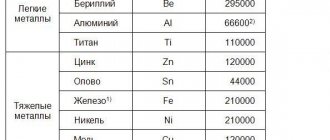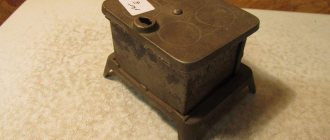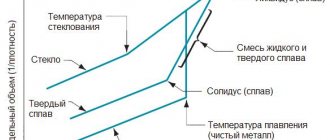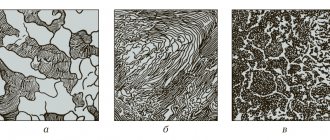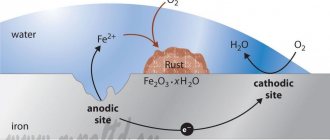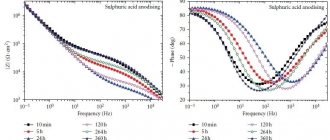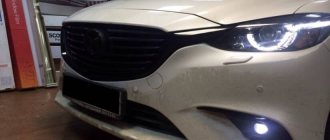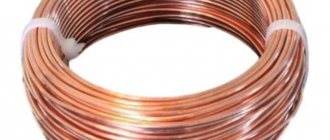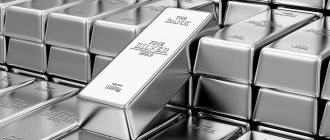Zinc
Zinc has a hexagonal structure. This explains the sharp anisotropy of its properties. Strength properties in the transverse (rolling) direction are significantly higher than in the longitudinal direction. At room temperature, cast zinc has little plasticity, but at 100-150 °C it becomes plastic and can be subjected to pressure treatment - rolling, pressing, stamping and deep drawing.
Pure zinc crystallizes during pressure treatment and does not require softening annealing. The processability of zinc during forming depends on its purity. Hot processing is negatively affected by the admixture of tin, which forms a eutectic with zinc with a melting point of 199 °C, and especially the simultaneous presence of tin and lead, which form a triple eutectic with zinc with a melting point of 150 °C. Iron delays the recrystallization of zinc.
During the natural aging process of zinc alloys, the dimensions of cast products decrease (by 0.07-0.09%). Two-thirds of the shrinkage occurs within 4-5 weeks, the rest - over many years. To stabilize the dimensions, heat treatment is used - annealing (3-6 hours at 100 °C, or 6-10 hours at 85 °C, or 10-20 hours at 70 °C).
Alloys can be soldered and welded. However, these processes are used mainly for sealing defects, since soldered seams have low strength. Only pre-nickel-plated alloys can be soldered with tin-lead solders. Flux is acidified zinc chloride. The best results are obtained by solder containing 82.5% Cd, 17.5% Zn. In this case, no flux is required.
Welding is carried out in a reducing flame. The electrodes and the product are made from the same alloy.
The most widely used casting zinc alloys are in the automotive industry for casting carburetor bodies, pumps, speedometer frames, radiator grilles, hydraulic brake parts, and various decorative parts. In addition, alloys are used for casting parts of washing machines, vacuum cleaners, typewriters, cash registers, mixers, electric watch cases, various kitchen equipment, etc. These alloys cannot be used in conditions of high and low temperatures, since already at a temperature of 100 ° With strength decreases by 30%, hardness by 40%, and at temperatures below 0 ° C they become brittle.
To increase corrosion resistance and for decorative purposes, various protective coatings are applied to zinc products. Depending on the service conditions of zinc products, two- or three-layer protective coatings of various thicknesses are used. Typically, copper, nickel and chromium are used as coatings.
Zinc anti-friction alloys
Antifriction zinc-aluminum-copper alloys are the most widely used. They are used both in cast and in deformed (rolled or pressed) states.
Distinguished by high antifriction properties and sufficient strength at room temperature, these alloys serve as good substitutes for bronze when working in friction units whose temperature does not exceed 80-100 °C. At higher temperatures, the alloys soften greatly and spread onto the shaft. provides two grades of alloy - TsAM 9-1.5 and TsAM 10-5.
Zinc alloys have a high coefficient of linear expansion, which should be taken into account when establishing the clearance size in the bearing.
Cast monometallic and bimetallic parts are mainly made from zinc antifriction alloys. Rolled products are made from TsAM 10-5 alloy. In the manufacture of cast parts, pig alloys are used or the alloy is prepared from primary materials using foundry production and remelting. It is recommended to carry out smelting under a layer of charcoal. Ammonium chloride is used as a flux in an amount of 0.1-0.2% by weight of the melt. More flux is added when the mixture is contaminated.
The metal cannot be overheated above 480 °C, since at higher temperatures the melt becomes highly saturated with gases. The casting temperature of zinc antifriction alloys is 440-470 degrees C.
Monometallic cast parts can be produced by earth casting, die casting, centrifugal casting and injection molding. When developing technology for casting products, it should be taken into account that the alloys TsAM 9-1.5 and TsAM 10-5 are prone to the formation of hot cracks, so molds that create difficult shrinkage should be avoided.
Products cast in the ground differ from those obtained by chill casting in that they have a larger number of pores and larger grain sizes. There is a significant scatter in the characteristics of mechanical properties. Therefore, it is advisable to use earth casting only for parts of complex configurations that are difficult to cast in a mold.
When centrifugal casting (linear speed at the periphery is 6-8 m/s, casting speed is 2-2.5 kg/s), the possibility of obtaining a zone of columnar crystals with reduced mechanical properties in the casting should be taken into account. With increasing speed, the structure becomes fine-grained, but a noticeable segregation of the aluminum-rich structural component of the alloy is observed. Therefore, to obtain critical parts, centrifugal casting must be used with caution.
Bimetallic cast parts, consisting of a zinc antifriction alloy and steel, are made by pouring the alloy onto the steel through a sublayer of pure zinc applied by hot-dip galvanizing. To obtain a strong connection, it is necessary to degrease and pickle the steel surface. After fluxing (the flux temperature should not exceed 150 °C), the steel base is heated, galvanized (0.5% aluminum is added to the zinc bath; the iron content in the bath should not exceed 0.5%), set in a mold and filled with an alloy.
The coefficient of metal utilization in the manufacture of rolled parts increases significantly. The TsAM 9-1.5 alloy is well processed in the cold, while cutting and stamping of the TsAM 10-5 alloy is best carried out at a temperature of 100-150 ° C, at which this alloy is very ductile. Bimetallic rolled products with both alloys are cold processed without complications. The fatigue strength of deformed alloys, especially in bimetal, is much higher than that of cast alloys. Therefore, products made from them can also work in more difficult conditions.
When a zinc alloy is used in tandem with a steel shaft, the hardness of the latter must be no lower than HB 300. If possible, beads, sharp transitions, etc. should be avoided in the design of monometallic rubbing parts, since zinc alloys poorly resist fatigue failure under conditions of exposure to large bending forces. effort.
An inseparable pair of metals
As a rule, lead is present in zinc alloys as an impurity. In nature, this inseparable pair of metals is found quite often. But in fact, high lead content in a zinc alloy degrades its physical properties, creating a tendency to intergranular corrosion if its content exceeds 0.007%. Most often, lead and zinc are found together in tin bronzes and brass.
If we talk about the eutectic of these two elements, it is important to note that up to a temperature of 800°C they do not mix with each other and represent two different liquids. With rapid cooling, Pb is uniformly distributed in the form of rounded inclusions along the grain boundaries. Zinc-lead alloy is used to make printing clichés due to the fact that it dissolves very quickly in acid. Most often, lead impurities are removed from zinc using the distillation method.
Features of obtaining zinc TsAM4-1
Features of obtaining zinc TsAM4-1: the brand belongs to the alloys of the Zn-Al-Cu system. Industrial alloys of this system also include alloys TsAM4-3, TsAM10-5, TsAM9-4.5. When melting in crucible furnaces, alloys of the TsAM type are prepared as follows.
Approximately 2/3 of the calculated amount of zinc and an aluminum-copper alloy (50% Al and 50% Cu) are loaded into a crucible, pre-cleaned and heated to 400-500 °C, or into a furnace heated to 500-600 °C. , as well as pure aluminum and copper in quantities determined by calculation of the charge depending on the grade of the alloy. The mixture is covered with well-calcined charcoal. As the loaded part of the charge melts, the alloy is stirred and, at a temperature of 480–500 °C, the rest of the zinc is added (1/3 of the total amount). Immediately before casting, magnesium is introduced into the melt using a perforated bell.
The finished alloy is refined at 470-490 °C with zinc chloride or ammonium chloride (0.1-0.2% by weight of the charge). After settling and removal of slag from the surface of the melt, the alloy is sent for casting.
Melting is carried out at 470-500 °C. Zinc alloys, in which the main alloying component is copper (TsAM4-3, TsAM10-5), can be smelted at higher temperatures (500-550 °C).
Refining of TsAM4-1 alloy upon receipt
Refining of the TsAM4-1 alloy upon receipt: non-metallic inclusions in the TsAM4-1 zinc alloy are present in the form of ferrites of the (Zn, Cu)Ox(Fe, Al)2O3 type. Later it was found that in castings from the TsAM4-1 alloy, along with FeAl3 intermetallic compounds, there are inclusions of SiO2, spinel 3A12O3•2SiO2 and ZnAl2O4. At the same time, the share of non-metallic inclusions accounts for from 30 to 80% of the total content of inclusions. In turn, oxide inclusions are mainly spinels, and the share of ZnAl2O4 spinels is about 90% of their total amount.
The source of enrichment of castings with ZnAl2O4 inclusions is the oxidized and wet charge. The compound SiO2 and 3A12O3 • 2SiO2 are added to the melt with a charge contaminated with quartz sand and clay.
The efficiency of refining zinc melts is assessed by changes in the density and porosity of samples, by changes in the amount of suspended non-metallic inclusions, the rate of corrosion of samples and other characteristics. Thus, in the work, when choosing the optimal composition of the flux in the ZnCl2 - Na3AlF6 - NaCl system, which ensures the best refining ability of the TsAM4-1 alloy, we assessed the change in the area occupied by non-metallic inclusions on the sample, as well as the change in the percentage of metal in the slag removed from the treated surface baths. The results obtained made it possible to construct a composition-property diagram and select the optimal flux composition: 64% ZnCl2, 10% Na3 A1F6 and 26% NaCl.
Fluxes are introduced into the zinc melt in two stages. At the first stage, during the preliminary refining operation, a flux of the following composition is used: rosin 62-89%, coconut oil 3-12%, ammonium chloride 8-26%; at the second (final) stage of refining (in multi-stage modes), the flux contains: rosin 57-92%, bitumen 5-2 8%, ammonium chloride 3-15%. In another option, at the first stage of application, a flux containing 35-55% rosin, 30-40% resin from coniferous trees, 4-12% ozokerite, 5-15% paraffin; at the second stage, a flux of the following composition is used: 42-74% rosin, 13-50% coniferous tree resin, 3-8% stearin. At each stage, after introducing flux, the melt is kept for 30-50 minutes, followed by removal of dross. In the case of refining zinc alloys, oxides of other metals that have not reacted with the flux components may float to the surface of the melt along with zinc oxides.
Rules of care
Girls want their jewelry to last as long as possible, so they ask themselves: how to maintain its appearance? Avoid contact with aggressive agents. These include soap, detergents, shampoo, shower gel and other chemicals. Even water negatively affects the appearance of the product.
It is also not recommended to wear perfume or deodorant. It is better to apply perfume away from a chain made of such metal, otherwise it will quickly lose its appearance.
Does jewelry alloy darken?
It all depends on the composition with which it was coated. Metal darkens under the influence of the external environment, and the only exception is galvanic coating, which is highly resistant.
How to clean jewelry?
To clean jewelry, use a soft cloth or napkin. Do not use soap or other means. It is enough to remove the product and wipe it from all sides. This procedure can be carried out once every few days.
Jewelry made from beads or glass can be cleaned with warm water and soapy water.
How to store?
It is best to store each product in a small bag. Often they come complete with decoration. Otherwise, a chemical reaction between different metals is possible. It should not be stored in the same box with silver or gold.
Features of casting products from zinc TsAM4-1
Features of casting products from zinc TsAM4-1: zinc alloys for injection molding must have high fluidity with slight overheating, not interact with the metal of molds and pressing chambers, and not be welded to molds. Alloys must have a short crystallization interval and strength at high temperatures, since castings are subjected to significant loads during shrinkage and tight compression of metal rods, when removed from the rods and pushed out of the mold. In Russia, zinc alloys TsAM4-3, TsAM4-1, and some others are mainly used for injection molding.
Castings from zinc alloys are produced using compressor and piston injection molding machines. The most widespread method in our country for producing zinc castings is piston pressure casting on machines with a cold pressing chamber.
When injection molding, the following requirements are imposed on the design of castings:
- the casting should not have protrusions and undercuts that would prevent the removal of rods and inserts from the casting and its removal from the mold;
- the casting should not have a large difference in wall thickness: the thickening of individual casting places should be reduced with the help of ribs, holes, and stiffeners; stiffening ribs provide the necessary strength of the casting with less metal consumption;
- castings must have casting slopes in the direction of removing the cores and inserts and mold parting: for external surfaces, the slopes must be at least 0° 15; and for internal surfaces formed by movable rods - no less than 0°30, fixed ones - no less than 1°;
- castings should not have sharp corners (except for corners in the parting plane) and large radii of transition from one wall section to another.
Castings obtained by injection molding are divided into three categories according to the degree of complexity:
I - castings of a simple configuration with blind surfaces or small, simple-shaped ribs and protrusions, having casting slopes on the inner surface of 1°, on the outer surface 0°30. II - castings with straight and curved surfaces, with recesses and protrusions, with sharp transitions from thin sections to thick ones; casting slopes on the inner surface are 0°30 - 1°, on the outer surface 0°15-0°30. III - castings of complex configuration with straight and curved surfaces of complex shapes, with a significant number of recesses, protrusions, ribs, windows, with deep holes of small sizes; The minimum casting slopes on the inner surface are 0°30, on the outer surface 0°15.
The accuracy of castings depends on the correct execution of the dimensions of the mold cavity, taking into account the shrinkage of the alloy and the degree of wear of the mold during operation. The shrinkage of zinc alloys for castings with walls 1-3 mm thick is 0.4-0.5%; with greater thickness of the casting walls, the shrinkage is 0.5-0.6%. The composition of the alloy, the temperature of the alloy and mold, and the length of time the metal is kept in the mold also affect the accuracy of the castings. The accuracy class of zinc castings produced by injection molding depends on their nominal dimensions. As casting sizes increase, accuracy decreases. Casting sizes up to 30 mm correspond to the 4th accuracy class, sizes 30-120 and 120-360 mm - 5th and 7th classes, respectively.
The surface cleanliness of castings depends on the cleanliness of the mold surface. When die casting zinc alloys, the surface cleanliness of the castings reaches class 7-8. However, as the mold wears, the surface finish deteriorates. The average values of surface cleanliness of castings correspond to class 6.
What are the alloys coated with?
Alloys that require plating (gold or silver) can be thinly coated with gold or silver, or simply painted. Foil foiling is also often used. Expensive products are electroplated
- this is a more complex process of applying one metal to another, the result is high-quality, the product is wear-resistant.
Jewelry coatings are also rhodium, osmium, paladium -
more expensive.
Less expensive ones are nickel, ruthenium, copper, bronze and brass.
